A Retrospective of Xenia Hausner’s Cinematic, Electrically Colorful Paintings Will Open at Vienna’s Albertina Museum This Spring
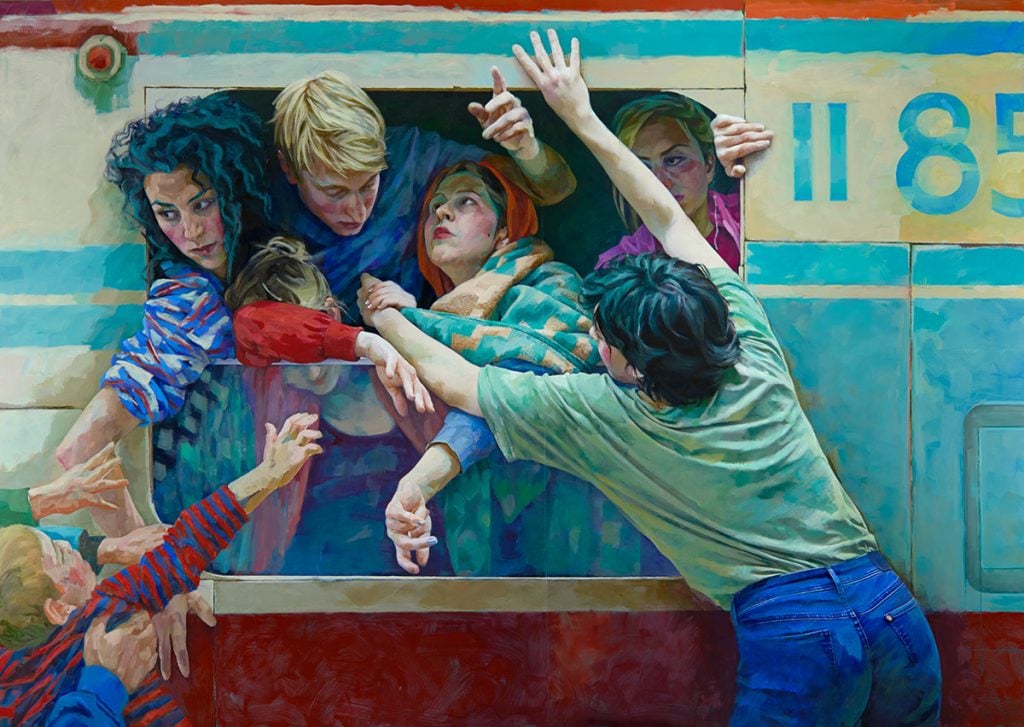

Artnet Gallery Network

Xenia Hausner’s vividly hued paintings have the feel of cinematic snapshots: a couple embraces in the backseat of a car; a woman holds a gun to her head with a birthday cake in front of her; people cling to each other from a train window. Her intriguing images hint at larger unknown narratives that intentionally keep the viewer in a state of fascinated uncertainty.
Regarded as one of the most important Austrian artists of our time, Hausner will soon be the focus of an exhibition, titled “True Lies,” at the Albertina Museum in Vienna opening this April, which will bring together paintings made across the past several decades.
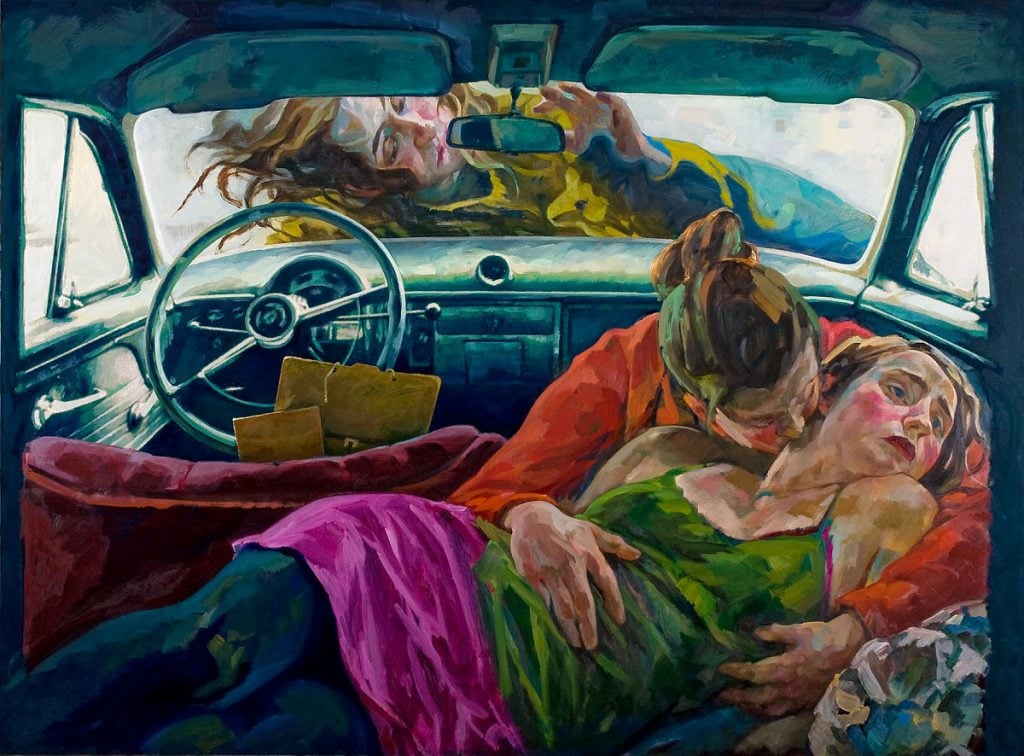
Xenia Hausner, Das blinde Geschehen (2010). Courtesy of the artist.
The focus of the exhibition will be Hausner’s unique practice of staging. To create her paintings, the artist first constructs elaborate spatial settings in her studio and photographs them before she starts to work. Her models assume the roles of characters in these curiously unexplained scenarios, which we could alternately imagine as stills from a movie, snapshots from a photo album, or even images from a newspaper.
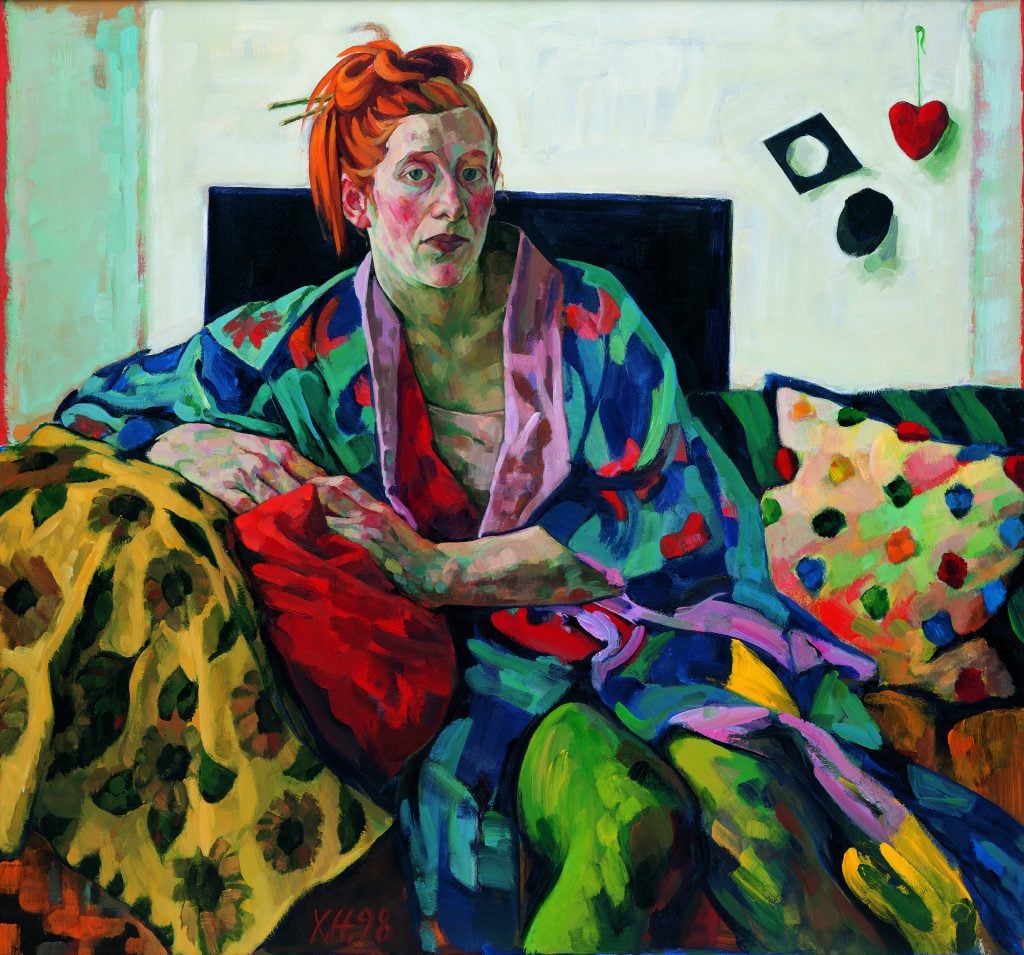
Xenia Hausner, Mikado. Courtesy of the artist. Photo by Stefan Liewehr.
Conceived as a retrospective, the works on view date from the early 1990s up to her most recent series, “Exiles.” The artist is also currently on the lookout for a painting from the late 1990s titled Mikado, which she’d like to include in the exhibition.
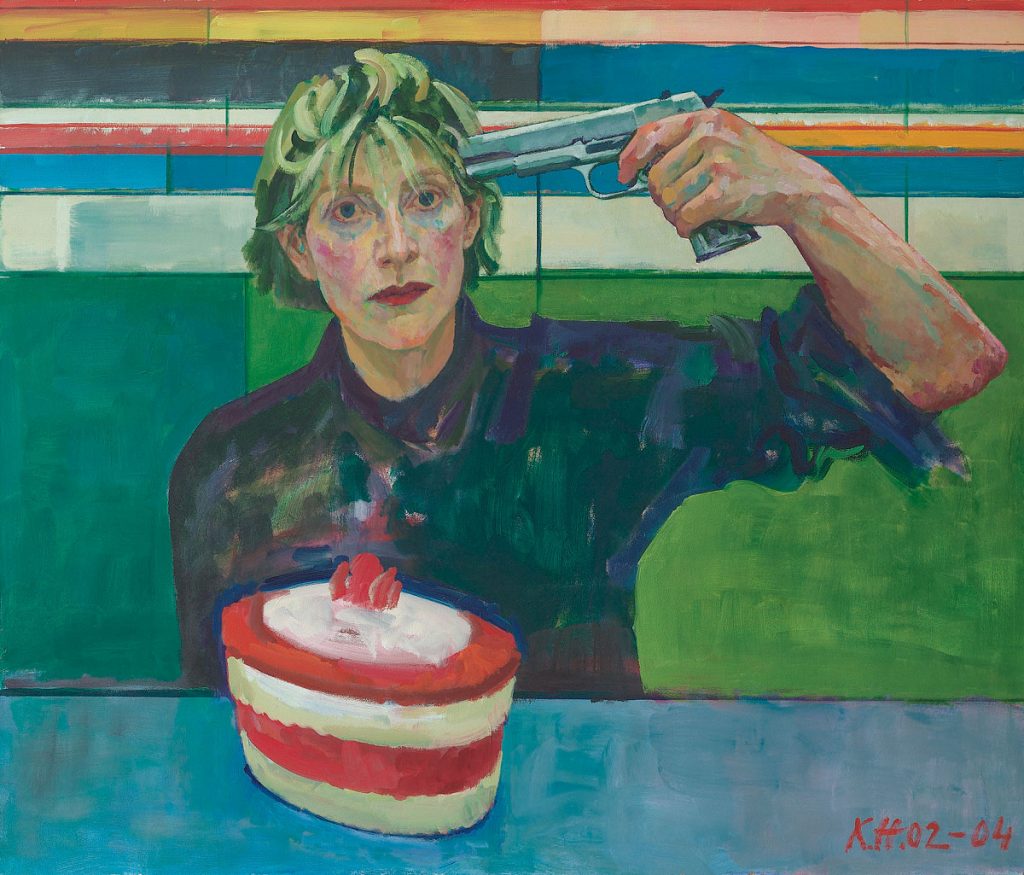
Xenia Hausner, Kopfschuss (2002–2004). Courtesy of the artist.
The lavishly colorful painting depicts a red-haired woman, seated in a colorful robe. Hausner said the model was a young art student at the time whom she’d met at the Paris Bar-Bistro in Berlin in 1998, while waiting for a coffee at the counter.
“Her pale intelligent face, her questioning attitude attracted me. I invited her to my studio to take photographs,” Hausner explained in an email. “She wrapped herself in a Japanese dressing gown and stuck chopsticks in her hair. I placed her in the middle of the remaining fabric and model materials, which were lying around the studio. This is what you see in the background: the puzzling elements interacting with the figure of the woman in a dynamic composition.”
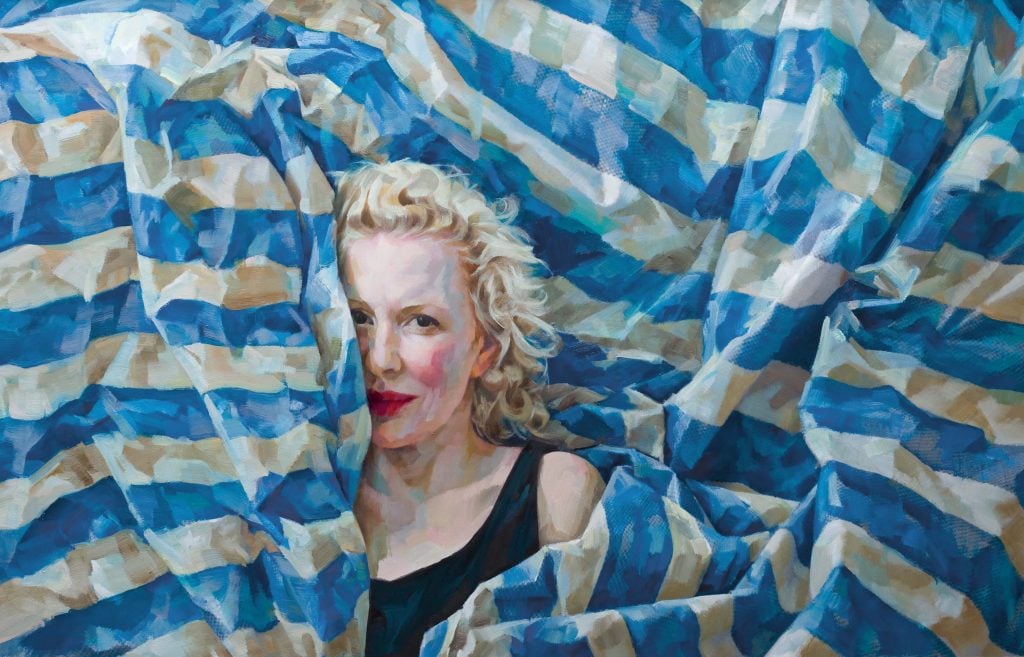
Xenia Hausner, Gone Girl. Courtesy of the artist. Photo by Stefan Liewehr.
The painting was last exhibited in 2004 in the German exhibition “Strange. Reports of a Far Nearness” at the Kunstfest Weimar. The painting, Hausner says, would provide an interesting bridge in the exhibition between her early works of the 1990s with later staged portraits. (She asks anyone with knowledge of its whereabouts to reach out to her studio.)
As with all the other works on view in “True Lies,” Mikado presents a world of women protagonists in all the leading roles. “While it is the male gaze that characterizes art history,” the museum says in a statement for the exhibition, Hausner “pursues her investigations in a puzzling counter-world where all themes are explored by women—who can assume all roles and thus mostly also play the male part.”
“True Lies” will be on view at the Albertina Museum from April 30—August 15, 2021.